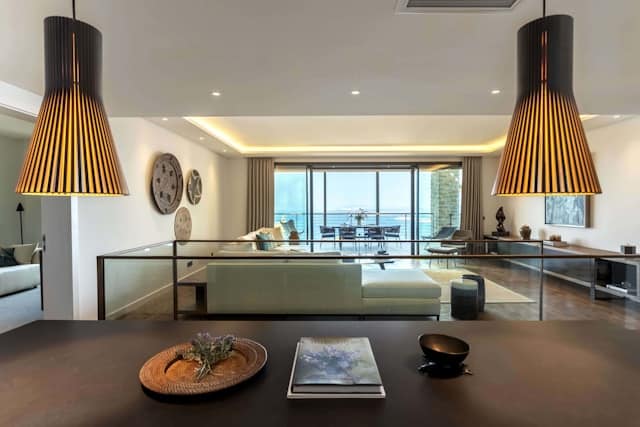What Are the Best Techniques for Maximizing Natural Light in Narrow Urban Homes?

You live in the heart of the city, in a narrow urban house that’s sandwiched between other buildings. While you love the convenience and vitality of city life, one thing you crave is more natural light. Years of living in shadowy, artificially lit spaces have made you yearn for daylight to flood your living spaces. Well, you’re not alone. Urban homeowners and architects are increasingly seeking ways to maximize natural light in homes to improve not only aesthetics but also energy efficiency and overall well-being. Let’s delve into some of the best techniques to allow more daylight into your urban home.
Harnessing Natural Light Through Building Design
Building design plays a pivotal role in determining how much natural light a house gets. Architects and designers can influence the flow of light into a building by strategically planning the layout, size, and location of windows and other openings. For narrow urban homes, this task can be challenging, but it’s not impossible.
A voir aussi : What Strategies Are Effective for Real Estate Marketing to International Buyers in the UK?
Large windows are a common way to invite more light into a home. However, for urban houses that are surrounded by other buildings, this might not be a feasible option. Instead, consider installing tall, narrow windows. These can fit into tight spaces and extend up to the height of the room, allowing daylight to penetrate deeper into the house.
Another technique is to design an open floor plan. Walls can obstruct light, so removing unnecessary partitions and creating a more fluid layout can improve daylight distribution. Similarly, using glass partitions instead of solid walls can help light travel further.
A lire en complément : How to Design Smart Homes with Advanced Air Purification Systems?
Strategic Use of Interior Design Elements
Interior design elements such as color, material, and furniture placement can significantly influence how light behaves in a space. By making smart choices, you can enhance the amount of daylight in your home and improve its overall ambiance.
Light colors are known to reflect light, making a room feel brighter and more spacious. Painting walls, ceilings, and floors in shades of white or other light colors can help maximize natural light. Similarly, glossy surfaces reflect more light than matte ones. So, consider incorporating polished stone, glass, or mirror elements into your interior design.
Selecting the right furniture is crucial too. Bulky, dark-colored furniture can absorb light and make a room feel darker. Instead, opt for light-colored, slimline furniture that leaves more floor area exposed. Also, arranging furniture away from windows can prevent it from blocking daylight.
Lighting Control and Daylighting Devices
While natural light is desired, it’s equally important to control it to prevent glare and overheating. Blinds, shades, and curtains let you modulate light levels according to different times of the day and seasons, enhancing comfort and energy efficiency.
For homes where direct sunlight is limited, daylighting devices can be a game-changer. Skylights and light tubes can channel daylight from the roof into spaces that traditional windows cannot reach. These devices not only brighten up the room but also add an element of architectural interest.
Incorporating Biophilic Design
Biophilic design, which connects building occupants to nature, is a powerful tool for maximizing natural light. It goes beyond merely adding more windows. It’s about creating spaces that enable inhabitants to experience light in ways that are meaningful and beneficial.
One way to implement biophilic design is to introduce a courtyard or light well. Even in a narrow house, a small, open-to-sky area can make a big difference by bringing in light and creating a connection with the outdoors. Living walls, indoor gardens, and water features can amplify this connection.
Making Sustainable Choices
Embracing natural light is not just about visual comfort; it’s also about sustainability. As you strive to make your urban home brighter, consider how your choices impact energy consumption and the environment.
Implementing passive solar design principles can help you make the most of natural light while also reducing heating and cooling costs. For instance, south-facing windows allow winter sun to heat the house, while shading devices can block high summer sun.
Also, think about the longevity and recyclability of the materials you use. Natural, durable materials like wood and stone not only reflect light beautifully but are also better for the environment.
In summary, maximizing natural light in narrow urban homes involves a blend of smart architectural design, strategic interior choices, and sustainable practices. While challenges exist, the potential benefits make it a worthwhile endeavor. So, let the light in, and transform your urban dwelling into a bright, energy-efficient, and delightful living space.
Using Daylight Redirection Devices and Ventilation Techniques
Daylight redirection devices are an excellent way to manage the flow of natural light in your narrow urban home. These devices, typically installed near windows or on the roof, capture, redirect, and scatter daylight into living areas that may otherwise depend on artificial lighting. They can be particularly beneficial for rooms that are too deep or have no access to windows.
Daylight redirection devices come in a variety of types, including light shelves, louvers, and prismatic glazing. Light shelves, for instance, are installed above eye level to reflect light onto the ceiling and further into the room. On the other hand, louvers, whether horizontal or vertical, can control the amount and direction of incoming light. Prismatic glazing can bend light and spread it evenly across a space.
In addition to these, creating a light ventilation system can also aid in maximizing natural light. This refers to strategically placing windows and vents to maximize the flow of both light and fresh air into your house.
It’s vital to remember that these techniques not only enhance natural lighting but also improve indoor air quality. Plus, by reducing the need for electric lighting during the day, they can contribute to energy efficiency.
Combining Artificial and Natural Lighting for Perfect Balance
While the aim is to maximize natural light, it’s important to remember that artificial lighting still plays a crucial role in your home’s lighting scheme. There will be times when natural light is insufficient, like during the night or on cloudy days. In these instances, artificial light can supplement daylight, ensure sufficient illumination, and add to your home’s ambiance.
Consider integrating different types of artificial lights that can be adjusted to various needs and moods, such as task lighting for focused work, ambient lighting for general illumination, and accent lighting to highlight artwork or architectural features.
When selecting artificial lighting, opt for energy-efficient options like LED or CFL bulbs. They use less energy and last longer than traditional incandescent bulbs. Moreover, opt for lights that have dimming capabilities, enabling you to control the intensity of light based on the available natural light.
Conclusion
Maximizing natural light in a narrow urban home is a multifaceted process. It involves careful architectural and interior design planning, the strategic use of daylight redirection devices and ventilation techniques, and a balanced combination of natural and artificial lighting.
By employing these techniques, you can effectively transform your living areas into bright, airy, and energy-efficient spaces. Moreover, by embracing biophilic design and making sustainable choices, you can further enhance your connection with nature and minimize your environmental footprint.
Remember, every home is unique, and what works in one might not work in another. Therefore, it’s advisable to seek professional advice before implementing major changes to your home’s architecture or lighting system. The aim is to create a living space that not only meets your light needs but also resonates with your personal style and comfort.
Embrace the challenges and opportunities of living in a narrow urban home, and let natural light illuminate your space, enhance your mood, and contribute to a more sustainable lifestyle.
